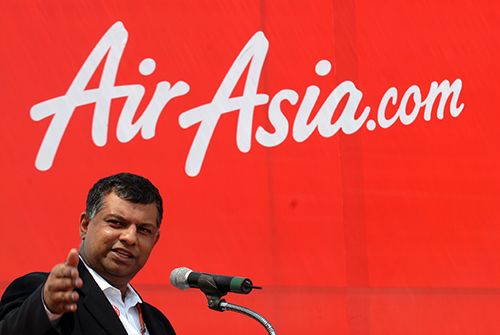By Oussama Salah, Vinay Bhaskara, and Devesh Agarwal
 |
| Photo copyright Devesh Agarwal |
The Indian government often makes curious decisions in setting aviation policy. For example, it encouraged Air India to lower prices to gain market share, causing mayhem in the market place and increasing Air India’s losses. It also recently allowed Air Asia to expand in India by approving a JV with the Tata and Bhatia group, creating an LCC that will put pressure on indigenous carriers like SpiceJet and IndiGo. The latest example is the quadrupling in the number of seats between India and Abu Dhabi due to the recently concluded UAE-India bilateral air services agreement which will mostly benefit the newly formed Jetihad partnership.
A recent
Bangalore Aviation analysis of International Traffic Share in and out of India, showed Jet Airways share at 16.01%, Emirates at 13.04% and Etihad at 1.95%. In one fell swoop, Etihad has not only caught up with Emirates, but has effectively almost doubled its total seat capacity because its strategic partner Jet Airways will have access to almost the same number of seats from the Indian side of the bi-lateral agreement. This is visible with the newest route being launched by Jet Airways - Kochi-Abu Dhabi-Kuwait.
The Indian market is important to the Gulf carriers as it is an important source of demand to MENA (Middle East and North Africa) , Europe, and North America. In particular, the North American market is being developed by these carriers at a rapid pace, and new routes such as Qatar Airways’ upcoming services to Philadelphia are heavily dependent on feed from the Indian subcontinent. The
latest India/UAE bilateral almost doubles the weekly seat allocation for Jetihad to Abu Dhabi.
Dubai has unofficially asked for a doubling of the weekly seat allocation to Dubai and the rights to serve additional Indian metros but officially requested an increase from 54,200 to 72,400 seats per week.
The problem is that Dubai and Emirates airline in particular are in the cross-hairs of the Comptroller and Auditor General (CAG) of India which has criticised the civil aviation ministry for granting excessive rights to the airline during the tenure of Praful Patel as minister. Emirates is facing the "Devil's Alternative". The spotlight is shining bright on it, however, with India accounting for 11% of Emirates huge global capacity, the airline cannot just let Etihad-Jet Airways (Jetihad) just gobble seat capacity.
Elections are looming next year, some very skilful and smart "lobbying" will have to be done.
Another tactic will be similar to Jetihad. Emirates can opt for to invest in one of the remaining India carriers, IndiGo, SpiceJet, or GoAir, in hopes of gaining additional capacity. It is doubtful the promoters of IndiGo who have access to large sums of cash will accept acquisition, GoAir has indicated its willingness, but is too small within India and does not have any international operations yet. SpiceJet is the wild card. Are the Marans ready to dilute or even exit the airline business with their Maxis and Astro business relations under investigation? Emirates is hesitant to invest in foreign airlines after its
poor experience with Sri Lankan Airlines, but will the airline have to bite the bullet to keep its India dominance alive?
Another option is for Emirates to code share with one of the large domestic players like Indigo or SpiceJet in order to increase its Indian feed and encourage them to operate additional flights to Dubai. Emirates currently code share on Jet Airways flights from Mumbai and Delhi to Dubai. Flydubai flies only to three destinations Hyderabad, Ahmedabad and Lucknow and would like to increase its Indian presence (which is less than 2% of its capacity). It is capable of serving smaller secondary airports thanks to its fleet of narrowbody 737-800s, and could provide additional feed for Emirates’ super-hub in Dubai. While flyDubai and Emirates are technically separate entities, both are owned and operated by the government of Dubai and increased integration of the route networks is possible.
But code sharing is a short term solution. Ultimately, the real fix has to be driven through the India-UAE bilateral. Emirates needs the increased capacity for itself and flydubai. Emirates can leverage Dubai’s position as a global business hub and destination for Indians to ask for increased services. Indians are the top expatriate investors in Dubai property (9 Billion AED) and the UAE is the second largest trading partner of India with billions of dollars in reciprocal investments. With almost two (2) million NRIs (non resident Indians) living in the UAE, many affluent, the UAE has a solid basis to ask for increased seat capacity in the next round of bilateral talks. However, it would need to find a powerful Indian advocate to help in its cause. Jetihad was able to secure such a large growth in bilateral capacity to Abu Dhabi in large part thanks to the political influence of Jet Airways head Naresh Goyal. It remains to be seen whether Emirates can find a similarly connected individual to help advance its interests, and by extension those of flydubai and even Air Arabia.
Regardless, with the current state of flux in Indian Aviation, Emirates will not stand still in response to Jetihad, expect something to happen, and soon.
Oussama Salah, who blogs at “Oussama’s Take”, is an aviation geek and aviation professional with 35 years of experience in the Mena/GCC airline industry. He is a regular contributor to Bangalore Aviation with his insightful and knowledgeable comments.




+Mr.+Rahul+Bhatia,+Group+Managing+Director,+InterGlobe+Enterprises+and+Mr.+Marc+Parent,+President+&+CEO,+CAE.JPG)





















